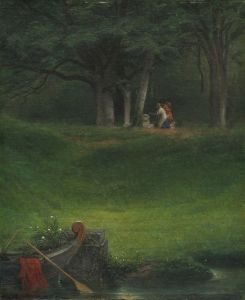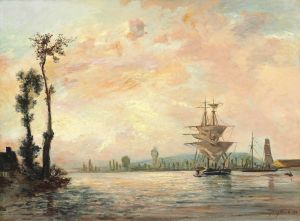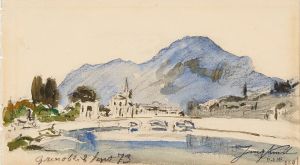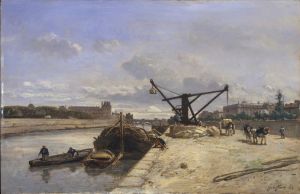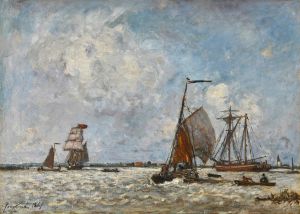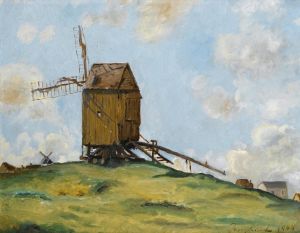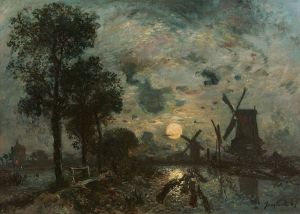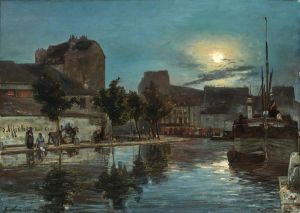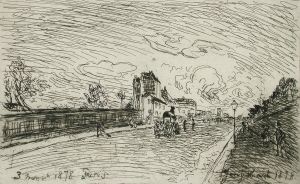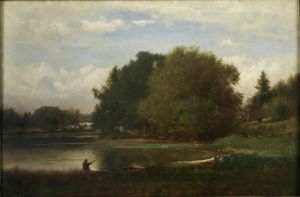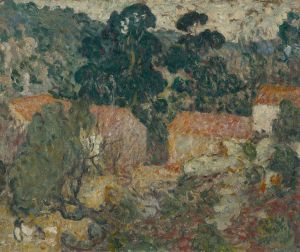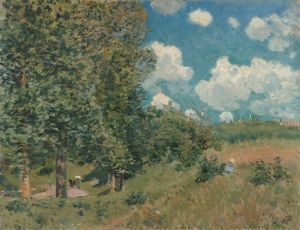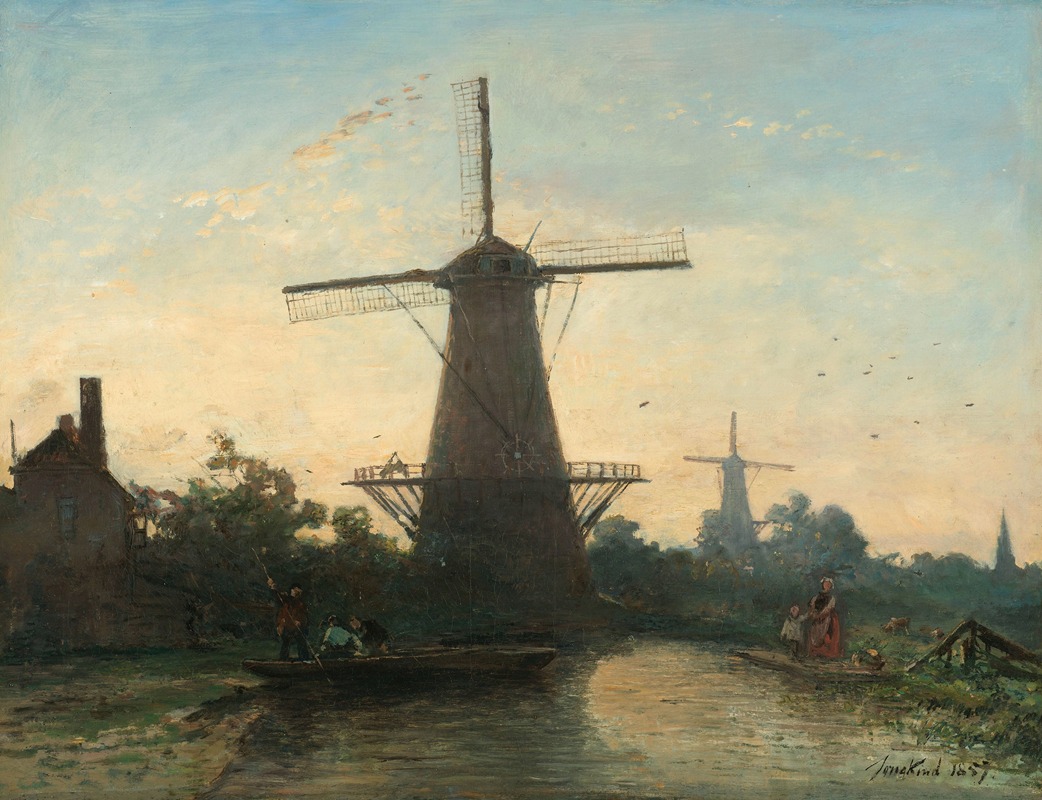
Windmills near Rotterdam
A hand-painted replica of Johan Barthold Jongkind’s masterpiece Windmills near Rotterdam, meticulously crafted by professional artists to capture the true essence of the original. Each piece is created with museum-quality canvas and rare mineral pigments, carefully painted by experienced artists with delicate brushstrokes and rich, layered colors to perfectly recreate the texture of the original artwork. Unlike machine-printed reproductions, this hand-painted version brings the painting to life, infused with the artist’s emotions and skill in every stroke. Whether for personal collection or home decoration, it instantly elevates the artistic atmosphere of any space.
"Windmills near Rotterdam" is a painting by the Dutch artist Johan Barthold Jongkind, who is often regarded as a precursor to the Impressionist movement. Jongkind was born on June 3, 1819, in Lattrop, Netherlands, and he spent a significant portion of his career in France, where he became known for his landscape paintings and his influence on younger artists, including Claude Monet.
Jongkind's work is characterized by his innovative use of light and color, which helped lay the groundwork for the Impressionist movement. His paintings often depict serene landscapes, rivers, and coastal scenes, capturing the transient effects of light and atmosphere. "Windmills near Rotterdam" is one such painting that exemplifies his style and thematic focus.
The painting portrays a quintessential Dutch scene, featuring windmills, which are iconic symbols of the Netherlands. The setting near Rotterdam suggests a connection to Jongkind's homeland, as Rotterdam is a major city in the Netherlands known for its rich maritime history and vibrant cultural scene. The windmills depicted in the painting are likely traditional Dutch windmills, which were commonly used for various purposes, including milling grain and managing water levels in the low-lying regions of the country.
Jongkind's technique in "Windmills near Rotterdam" reflects his mastery of capturing the interplay of light and shadow. His brushwork is loose and fluid, allowing him to convey the movement of clouds and the shimmering reflections on water surfaces. This approach to painting was innovative at the time and influenced many Impressionist painters who followed him.
The composition of the painting is balanced and harmonious, with the windmills serving as focal points against a backdrop of expansive skies and tranquil waters. Jongkind's use of color is subtle yet effective, with a palette that includes soft blues, greens, and earth tones, creating a sense of calm and serenity.
Jongkind's influence on the Impressionist movement is well-documented, and his work was admired by many of his contemporaries. Claude Monet, in particular, credited Jongkind with teaching him the importance of capturing the effects of light on the landscape. Monet's own work would later become synonymous with the Impressionist movement, highlighting Jongkind's significant impact on the development of modern art.
"Windmills near Rotterdam" is a testament to Jongkind's skill as a landscape painter and his ability to evoke the essence of the Dutch countryside. The painting remains an important piece in the study of 19th-century art, illustrating the transition from traditional landscape painting to the more experimental approaches that characterized Impressionism.
Today, Johan Barthold Jongkind is celebrated for his contributions to art history, and his works are held in high regard by collectors and art institutions worldwide. "Windmills near Rotterdam" continues to be appreciated for its beauty and historical significance, offering viewers a glimpse into the serene landscapes of the Netherlands through the eyes of a pioneering artist.





